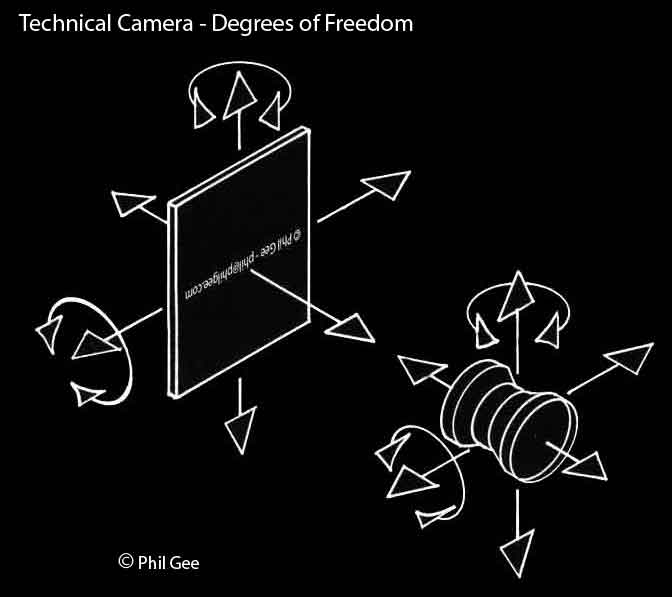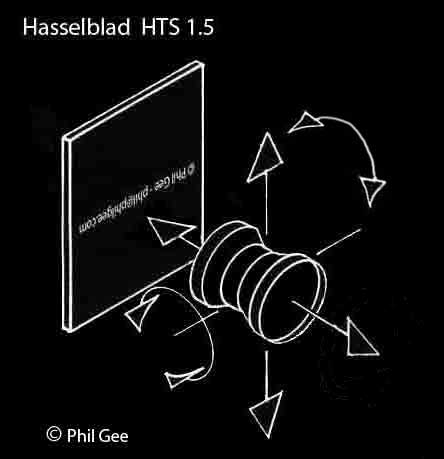Technical Camera Movements applied to Tilt-Shift lenses

Nomenclature Technical Camera movement of Film and or Lens Standard
Rise and Fall - Vertical movement
Shift - Horizontal movement Left or Right
Tilt - Up or Down
Swing - Horizontal Left or Right
MFDSLR - Tilt - Shift lens
The Medium Format DSLR Tilt-Shift Lens is an adaption of the movements normally associated with large format technical cameras to small and medium format cameras, you are able to move the lens along a plane parallel to the Film as well as achieve angular movements about its nodal point (Swing and Tilt) The Film or Sensor remaining in a fixed position.
Not all camera manufacturers use the same arrangement but in all cases the Film or Digital Sensor is in a fixed orentation. The Hasselblad's system employs an adaptor unit (HTS 1.5) which fits between the camera body and lens onto which a range of standard lenses can be fitted the
HCD 28mm
HC 35mm
HC 50mm
HC 80mm
HC 100mm
The optics contained within the Tilt Shift unit give an optical multiplier of approx 1.5x to the lenses focal length.Tilt and Swing movements are carried out using the HTS 1.5's mechanism which in addition to the Swing and Tilt movements can be rotated through +90˚ -90˚ enabling Tilt to become Swing and Shift to become Rise or Fall and the focusing movement by using the focusing ring on the lens.
Lens movements for the
Hasselblad HTS 1.5 (Format 48x36mm) are shown below.
Click on above graphic to link to latest information on the HST 1.5 from Hasselblad
To keep the unit compact the lens movements are limited to one Swing and one direction of Shift however the lens assembly can rotate so a Vertical Shift (Rise or Fall) can become a Horizontal Shift and a Horizontal Swing can become a Vertical Tilt (Swing is called Tilt when its Vertical ) by rotating the lens assembly.
Simultaneous Swing and Shift is possible but limited to only in the direction of Shift.
Whist this is a limiting factor these Tilt-Shift lenses have enabled Medium format DSLR users to gain some of the advantages of employing 'camera movements' in the field without the bulk of a Technical or Field camera.
You can put the packhorse out to pasture for a well earned retirement.
More information will be posted when I can get my hands on one in the mean time click on the graphic to be taken to the Hasseblad HST information web page.
Shift
Tilt (and Swing)
Whilst they are called Tilt-Sift lenses they Swing as well
Tilt is when you pivot the lens vertically and Swing when it is pivoted horizontally
The relative orientation of the 'film' plane to the subject determines the distortion of same on the 'film' plane, the movement of the lens determines coverage and depth of field
TBC...
